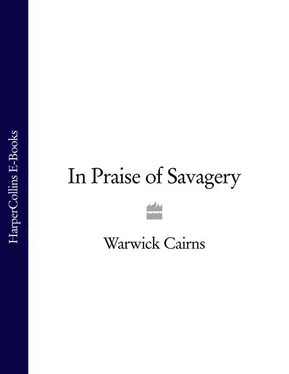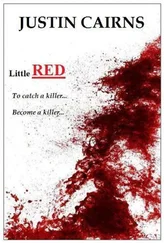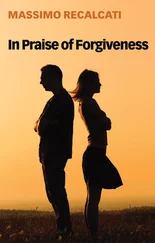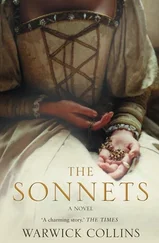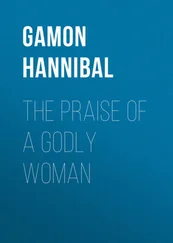The river flows on and on through the Danakil lands for mile after mile until there rises, in the distance, a line of purple hills known as the Magenta Mountains. There is a steep and narrow pass in these mountains, and the river flows through it, pouring down into an extraordinary oasis, shut in all round by sheer precipices of black rock. Some thirty miles square, it is a place of thick forest, deep swamp and huge lakes.
This is the land of Aussa, and it was, in the 1930s, the home of a great Danakil army who owed their absolute loyalty to the Sultan of that place, whose palace lay deep within the forest.
The Sultan, in those days, was a small, intense-eyed man called Muhammad Yuya. His father, the Sultan before him, had on his deathbed called for two slaves to be brought before him, one male and one female; and he had had them both slaughtered there, in the hope of seeing, in their death-agonies, some clue or portent that might help him escape his predicament. He could not. But no doubt it passed the time.
The river flows around Aussa on three sides, looking for a way out into the desert land beyond, where at some further point, before reaching the coast at Djibouti, it disappears. No one outside Aussa ever knew where it went.
There had been attempts to discover the river’s destination, over the years; and over the years there had been a number of expeditions to Aussa, but none had ever returned alive.
An expedition, in 1875, led by the Swiss explorer and mercenary Werner Munzinger, accompanied by his wife and children, were all murdered before reaching the borders of Aussa. In 1881, two Italians, Giuseppe Giulietti and Ettore Biglieri, had mounted an expedition to cross the country to the north of Aussa to establish a new trade route. Their bodies were found lying in the desert, horribly mutilated. Three years later, fourteen armed Italian sailors had tried to cross the same land from the opposite direction. They, likewise, were all killed. And in the 1920s, a party led by two Greek animal-collectors was hacked to death, although a third Greek managed to escape, crawling away on his hands and knees in the brief space between being left for dead and the corpse-mutilators getting down to their work.
In 1933, at the age of twenty-three and not long down from Oxford, Wilfred Thesiger made a decision.
‘I will bloody well go and do it myself,’ he said.
It was, as houses on the outskirts of Harlow New Town go, a fairly normal one.
It was semi-detached, and vaguely modern in style; or what would have been considered modern sometime in the mid-1960s, when it was built. It had large double-glazed picture windows with brown frames, and a bit of dark vertical wood-cladding in some parts and off-white render in others, and it sat in a row of houses that were identical—or that would have been identical at one time, before the replacement-window and flat-roof-extension salesmen came around. Also the stone-cladding salesmen, for one of the houses nearby had pinkish and yellowish crazy-paving up its walls, for reasons best known to its owner, and also to the owners of other similar houses I had passed on the way. It was in a cul-de-sac, the house, a cul-de-sac with only half a name. I say half a name, but it was a whole name—‘Winchester’ or ‘Gatefield’ or something—but it was a name without a description—it wasn’t Winchester Road or Gatefield Close or whatever—it was just what it was without the attachment. Things were like that, round that way, when they built Harlow New Town. It was a time when people knew better, you see.
The end of the Second World War—the cities bombed to smithereens, the population subsisting on powdered egg and dripping, the biggest and most powerful empire the world had ever known vanishing— poof! —just like that, gone in a puff of smoke, like a magician’s party-trick. It was plain that the old ways of doing things were worn out, and that they no longer applied in the modern age.
Road-names were part of it. For centuries, as long as roads had been around, they’d always been called Something Road, and Streets called Something Street, and so on and so forth; but no one, apparently, had ever thought to ask why. This, it was felt, would no longer do. There had been too much unnecessary adornment and frippery for far too long, the thinking went, and it was about time people started behaving rationally.
And so, in 1947, when the planners got down to work on Harlow New Town, roads called roads and streets called streets were to become things of the past. Henceforth, they would just have the functional part of the name, without the redundant descriptor (‘Yes, I can see that it’s a bloody road—you don’t have to tell me that!’).
And then there was the Town Centre itself, which was to be truly a Town Centre for the coming age. Because old-style town centres, in the pre-war world, had just happened—they’d grown up higgledy-piggledy over God knows how long, around lanes and alleyways, and were messy and crowded at the best of times; and when there were cars and delivery vans to add to the equation, they really just didn’t work any more.
It was now time to go back to the drawing-board and plan the whole thing properly, from scratch.
So Harlow New Town got an urban ring-road, for the traffic to go around, and it got the country’s first-ever pedestrian shopping precinct, all planned out by modern planners and designed by modern architects and built—well, probably still built by blokes in flat caps and donkey-jackets with packets of Woodbines in their pockets, but at least they did it using the latest reinforced concrete this time, and put raised walkways all over the place and flat roofs throughout. Which leaked, the roofs—but this was considered a small price to pay for what was manifestly a work of progress. In the words of the great American modernist Frank Lloyd Wright, ‘If the roof doesn’t leak, the architect hasn’t been creative enough.’ Or, as he put it, rather more bluntly, to clients who had the temerity to complain about their leaks, ‘That’s how you can tell it’s a roof.’
In 1951 Harlow got the country’s first-ever residential tower-block, The Lawn, as a taster of what was to come in the planned communities of the future. And as if all of that weren’t enough, to top it off they had sculptures in the parks and squares, so that Art would be for the many, not the few. Not just any sculptures, either—not long-dead generals in classic poses or things like that—but actual Henry Moores. Henry Moores are sort of roundy-shaped things, often with holes in them, and they were considered just the thing at that time—just the business for edifying the population. And the population, no doubt, after being thoroughly edified by the Henry Moores, would all go back up the stairwells of their modern high-rise flats stroking their chins thoughtfully, in order then to listen to a bit of atonal music on their Bakelite wirelesses while getting on with their basket-weaving and smoking their pipes.
It was to be a brave new world of communal solidarity and free dentures and spectacles on the National Health, a world that would see the gradual withering-away of class distinctions, private property, private schools, dirty drains and outdated traditions.
People believed in all that, then. There are still people who believe in it now.
It all depends, I think, on your view of the malleability and perfectibility of human nature: on the one hand, the degree to which we are as we are because, until now, we’d not had enough Progress and hadn’t learnt any better; and on the other hand the degree to which we are as we are because that’s just the way we are. Back then the balance of opinion among the people who knew best was definitely coming down on the malleability and perfectibility side.
Читать дальше
